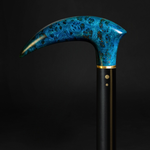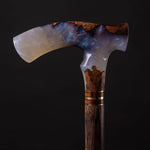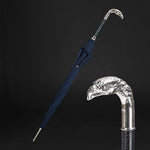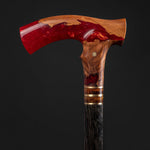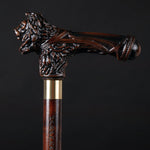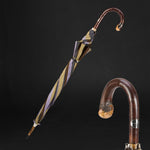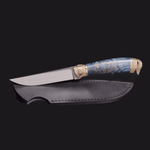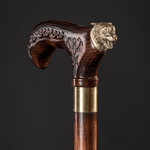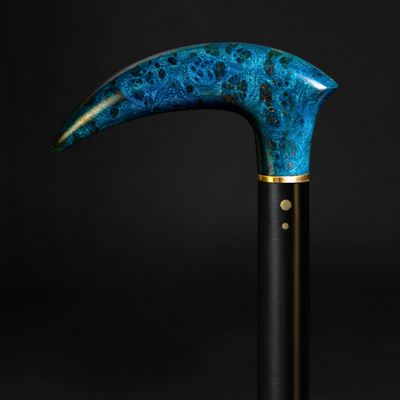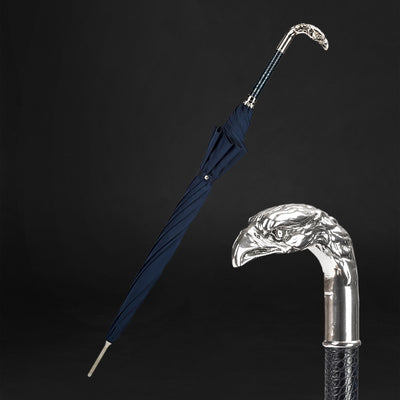You have no items in your shopping cart.
Recent Posts
-
Why an Elegant Cane Is a Thoughtful Gift for Loved Ones?
-
The Art of Christmas Design: Walking Canes That Celebrate the Season in Style
-
How an Ergonomic Walking Cane Handle Prevents Hand and Wrist Strain?
-
How to Walk With a Cane Correctly to Avoid Back or Shoulder Strain?
-
5 Common Mistakes People Make When Buying a Walking Cane (and How to Avoid Them)
-
How to Choose a Walking Cane That Reflects Your Personality (Not Just Your Needs)?
MOST POPULAR NOW
24
Aug
A walking cane is more than just a mobility aid—it’s also a personal accessory that affects comfort, posture, and even style. Unfortunately, many people rush into buying one and end up with a cane that doesn’t meet their needs. To help you make the right choice, here are the five most common mistakes people make when purchasing a walking cane—and how to avoid them.
5 Common Mistakes People Make When Buying a Walking Cane (and How to Avoid Them)
Choosing the Wrong Height
One of the biggest mistakes is buying a cane that’s too short or too tall. The wrong height can strain your back, shoulders, and wrists, leading to discomfort instead of support. A cane should generally reach the crease of your wrist when you stand upright with your arms relaxed. Here you can read about how to measure the size of a walking cane.

Ignoring Handle Comfort
Handles come in many styles—crook, derby, ergonomic, offset, and decorative designs. Many people choose based on looks alone, but comfort is critical if you’ll be using the cane often. An uncomfortable handle can cause blisters, sore wrists, or even joint pain. Always test how a handle feels in your hand before committing.
Overlooking Weight Capacity
Not all walking canes are built to support the same weight. Some stylish or decorative models are meant more for fashion than daily use. If you need a cane for balance and support, check its weight-bearing capacity. A sturdy wooden cane or a reinforced metal shaft is a safer choice than a purely ornamental piece.
Forgetting About the Cane Tip
The tip might seem like a minor detail, but it’s essential for safety and stability. A worn-out or low-quality rubber tip can slip easily, especially on smooth or wet surfaces. Make sure the cane has a durable, non-slip rubber tip—and replace it regularly. For added stability, you can also consider quad tips or all-terrain tips depending on your lifestyle.
Focusing Only on Function, Not Style
Many people treat canes as purely medical devices, but a walking cane can also be a reflection of personal style. Choosing a cane that matches your wardrobe, lifestyle, or even other accessories can make you feel more confident carrying it. From classic wooden canes to modern designs with silver or brass handles, there’s a wide range of options that combine function and fashion.

Final Thoughts
Buying a walking cane doesn’t have to be complicated, but avoiding these common mistakes will help you choose one that’s safe, comfortable, and stylish. The right cane should support your mobility while also reflecting your personality—making it not just a necessity but an accessory you’re proud to carry.
Also Purchased
-
Beige Walking Cane for Ladies Chamomile Flower, Wooden Walking Stick
Introducing our beautiful Beige Walking Cane for Ladies with Chamomile Flower, a Wooden Walking Stick that is hand carved and handmade, making it both pretty and unique. This walking cane...$79.50 -
Black Skull Head Walking Stick, Wedding Ceremony Designer Skull
Looking for a stylish and unique walking stick to elevate your look at your next event? Check out our Black Skull Head Walking Stick, the perfect accessory for any wedding...From $217.00 -
Exotic Burl Wood Walking Cane – Fashionable Artisan Stick
A sculptural statement in deep, oceanic blue — this walking cane is more than a support accessory, it's wearable art. Meticulously hand-shaped from stabilized burl wood, the handle evokes the...$425.00 -
ArtWalkingSticks™ MAGIC Walking Cane, Handmade - Make to Order
This piece of art is created for those who value details. We make one of a kind, handcrafted wood and resin canes. Our Wooden Canes are completely unmatched in creativity....$430.00 -
Umbrella with Eagle Handle, Fashion Umbrella For Men
Make a bold and fashionable statement with our Umbrella with Eagle Handle - a unique and functional accessory designed for men. The striking eagle handle is the highlight of this...$325.00 -
Fashionable Lion Shoehorn Long Handle, Pearly Brown Shaft, Handmade
Introducing our Fashionable Lion Shoehorn, a handcrafted, long-handled shoe horn with a pearly brown shaft that's both stylish and practical. The intricate Lion design adds a touch of elegance to...$240.00
















